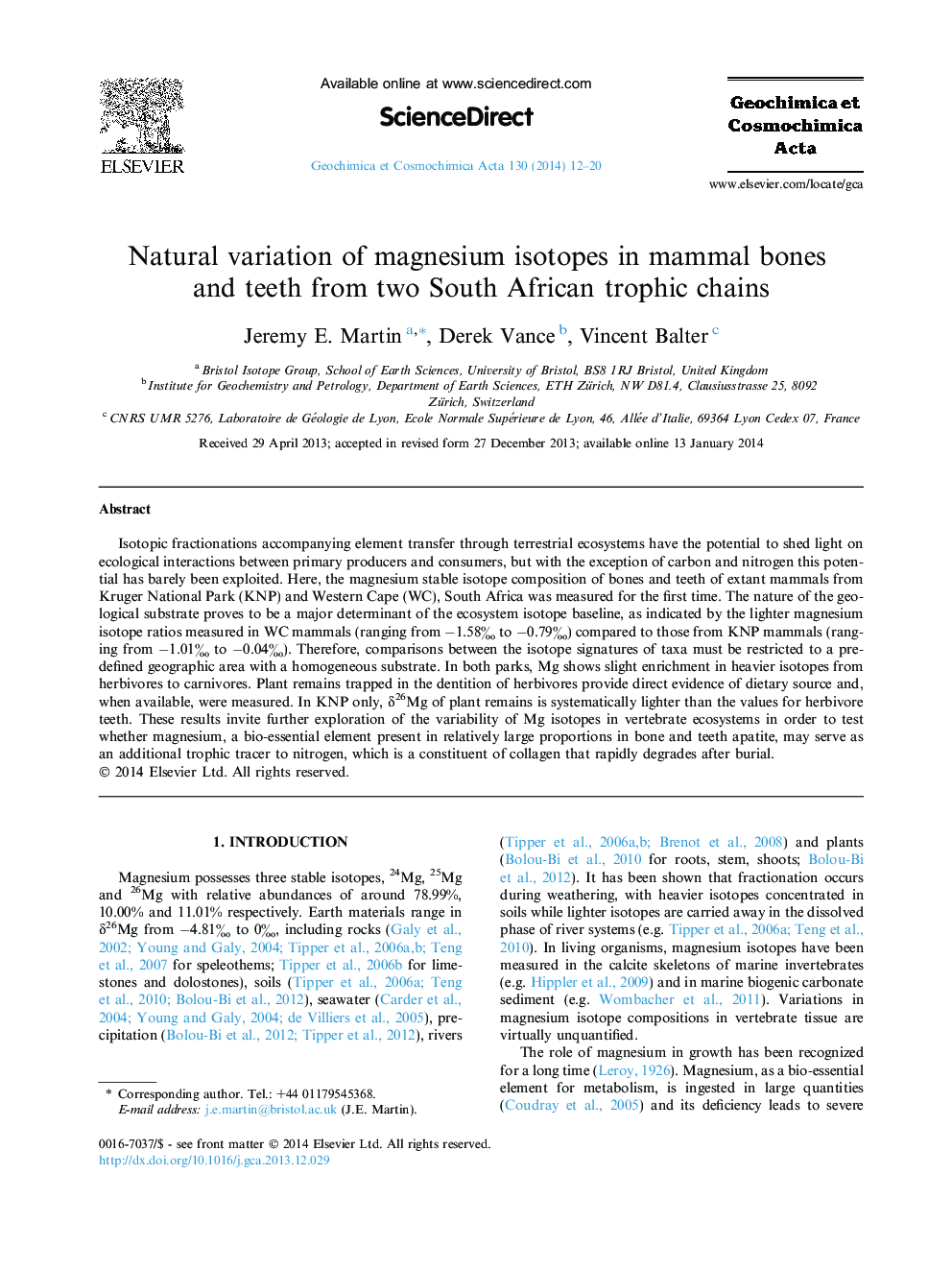| Article ID | Journal | Published Year | Pages | File Type |
|---|---|---|---|---|
| 4702159 | Geochimica et Cosmochimica Acta | 2014 | 9 Pages |
Isotopic fractionations accompanying element transfer through terrestrial ecosystems have the potential to shed light on ecological interactions between primary producers and consumers, but with the exception of carbon and nitrogen this potential has barely been exploited. Here, the magnesium stable isotope composition of bones and teeth of extant mammals from Kruger National Park (KNP) and Western Cape (WC), South Africa was measured for the first time. The nature of the geological substrate proves to be a major determinant of the ecosystem isotope baseline, as indicated by the lighter magnesium isotope ratios measured in WC mammals (ranging from −1.58‰ to −0.79‰) compared to those from KNP mammals (ranging from −1.01‰ to −0.04‰). Therefore, comparisons between the isotope signatures of taxa must be restricted to a pre-defined geographic area with a homogeneous substrate. In both parks, Mg shows slight enrichment in heavier isotopes from herbivores to carnivores. Plant remains trapped in the dentition of herbivores provide direct evidence of dietary source and, when available, were measured. In KNP only, δ26Mg of plant remains is systematically lighter than the values for herbivore teeth. These results invite further exploration of the variability of Mg isotopes in vertebrate ecosystems in order to test whether magnesium, a bio-essential element present in relatively large proportions in bone and teeth apatite, may serve as an additional trophic tracer to nitrogen, which is a constituent of collagen that rapidly degrades after burial.
